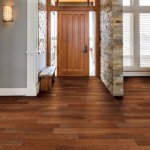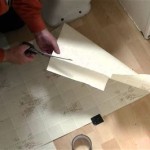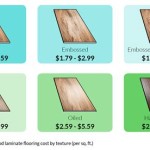Essential Aspects of Installing Vinyl Plank Flooring in Basements
Remodeling your basement by installing vinyl plank flooring is a magnificent way to elevate its appeal, comfort, and value. However, it requires meticulous planning and preparation to ensure a flawless installation that endures the unique challenges of a basement environment.
Acclimatization: A Crucial Step
Before embarking on the installation, allow the vinyl planks to acclimate to the ambient temperature and humidity levels within your basement for at least 24 hours. This crucial step ensures that the planks adjust to their installation environment, reducing the likelihood of expansion or contraction issues later on.
Subfloor Preparation: The Foundation of a Perfect Installation
A smooth, dry, and level subfloor is paramount for a successful vinyl plank installation. Inspect the subfloor for any imperfections, such as cracks or holes. If necessary, repair any damage and ensure the subfloor is structurally sound. If the basement has concrete flooring, it's recommended to install an underlayment to provide an extra layer of moisture protection and enhance the comfort underfoot.
Moisture Barrier: Shielding Against Moisture Concerns
Due to the potential for moisture in basements, it's essential to install a moisture barrier beneath the vinyl planks. This barrier acts as a protective layer, preventing moisture from seeping through the subfloor and damaging the flooring. Choose a moisture barrier that is specifically designed for use with vinyl flooring and follow the manufacturer's instructions for installation.
Floating or Glue-Down: Choosing the Right Installation Method
Vinyl plank flooring can be installed using two primary methods: floating or glue-down. A floating installation involves locking the planks together without adhering them to the subfloor. This method is ideal for basements that experience some movement or shifting due to moisture or temperature fluctuations. On the other hand, a glue-down installation involves adhering the planks to the subfloor using an adhesive. This method provides maximum stability and is recommended for basements that are less prone to movement.
Expansion Gaps: Allowing for Movement
When installing vinyl plank flooring in a basement, it's crucial to leave expansion gaps around the perimeter of the room. These gaps allow for movement caused by changes in temperature and humidity, preventing the flooring from buckling or warping. The recommended expansion gap is 1/4 inch for every 10 feet of flooring.

How To Install Vinyl Or Laminate Floors In A Basement Over Concrete Slab

Lvp Flooring Installation How To Install Luxury Vinyl Plank In A Basement Diy

Best How To Install Vinyl Plank Flooring Four Generations One Roof

Installing Luxury Vinyl Plank Flooring In Our Basement Week 5 Of The One Room Challenge Willow Bloom Home

Best How To Install Vinyl Plank Flooring Four Generations One Roof

Tips For Installing Vinyl Plank Over Concrete Floors Lemon Thistle

Installing Luxury Vinyl Plank Flooring In Our Basement Week 5 Of The One Room Challenge Willow Bloom Home

Ep5 Finishing A Basement How To Install Vinyl Plank Flooring Diy

Diy Vinyl Plank Flooring Install The Home Depot

Vinyl Plank Flooring Installation Basement Remodel Before And After
Related Posts








